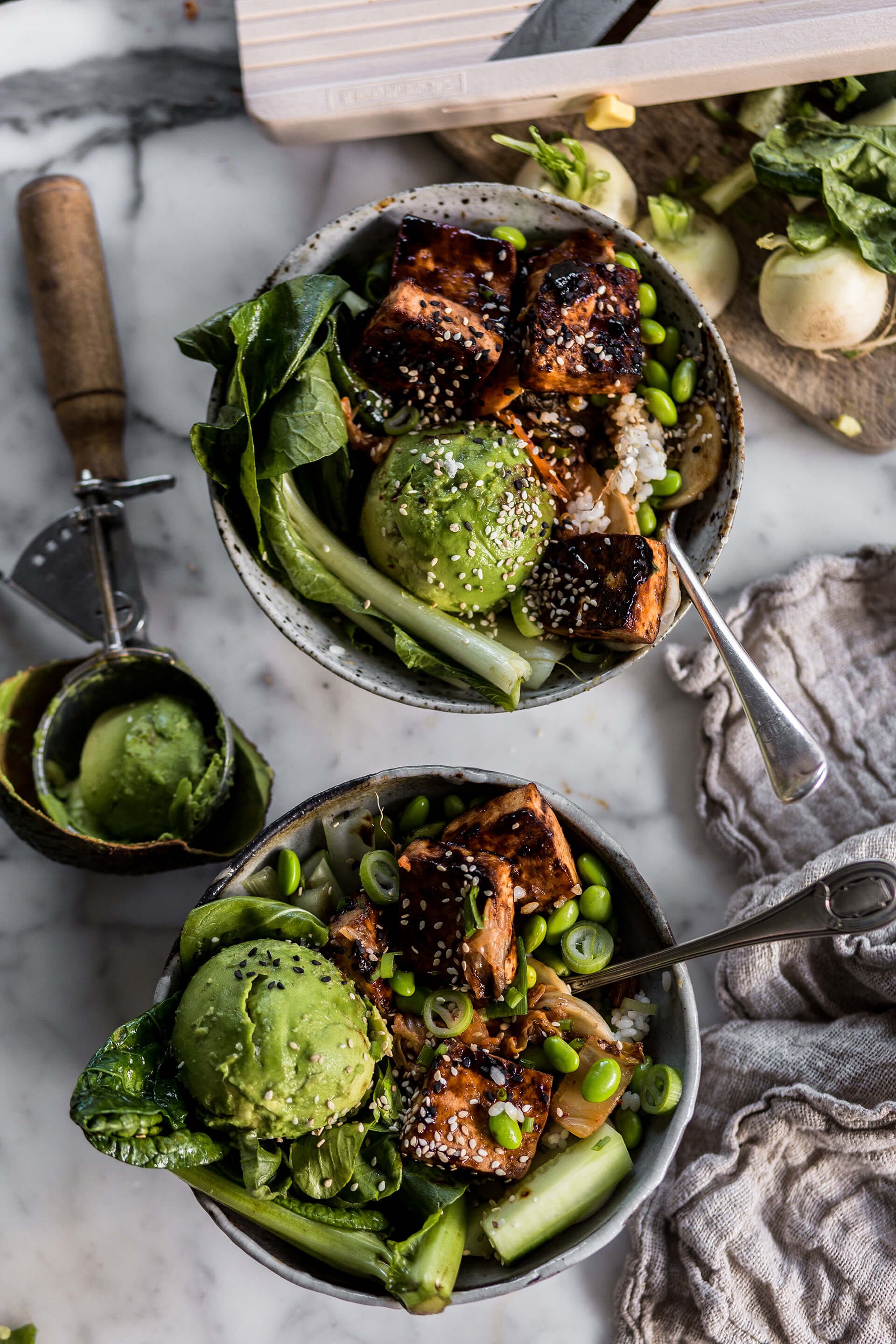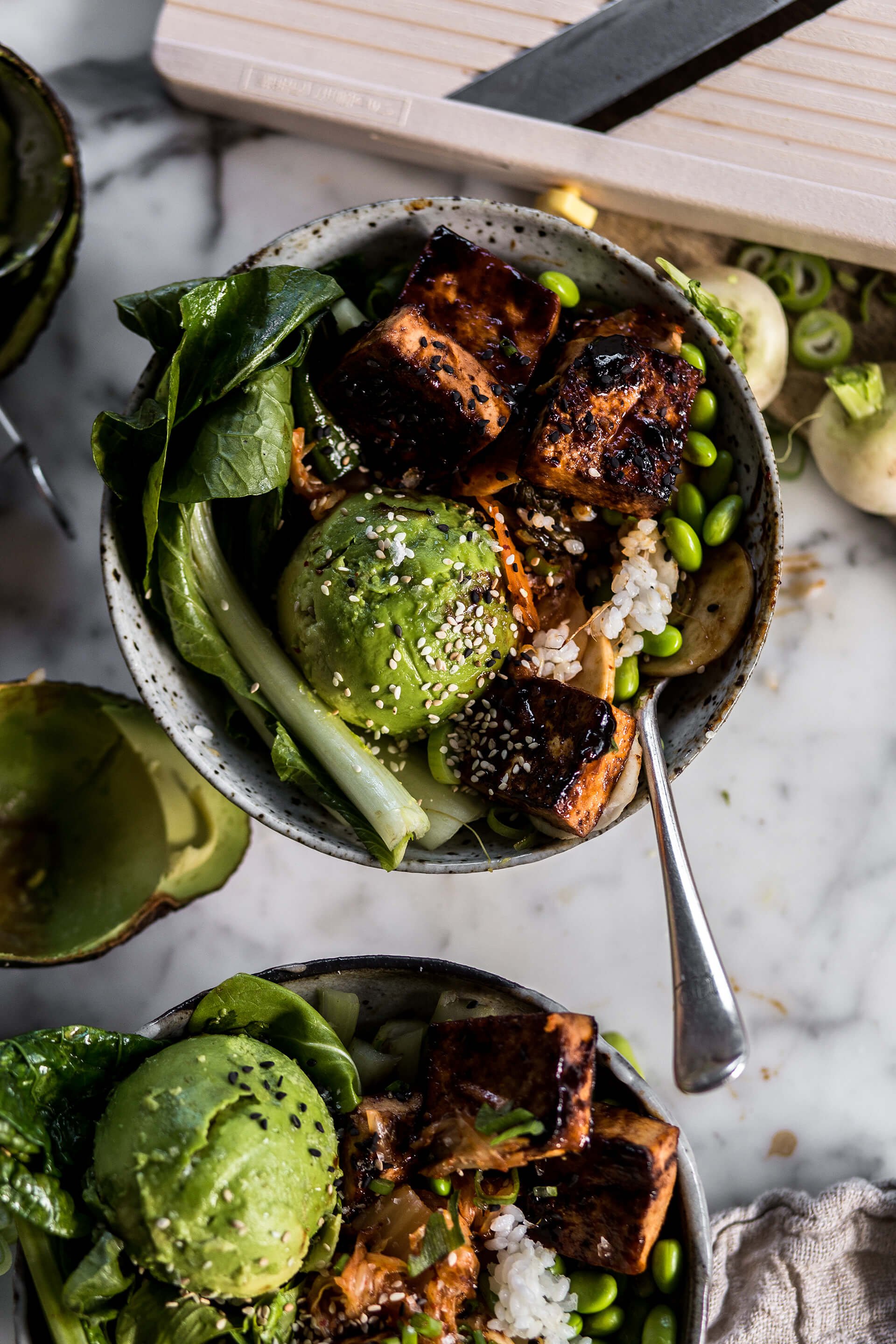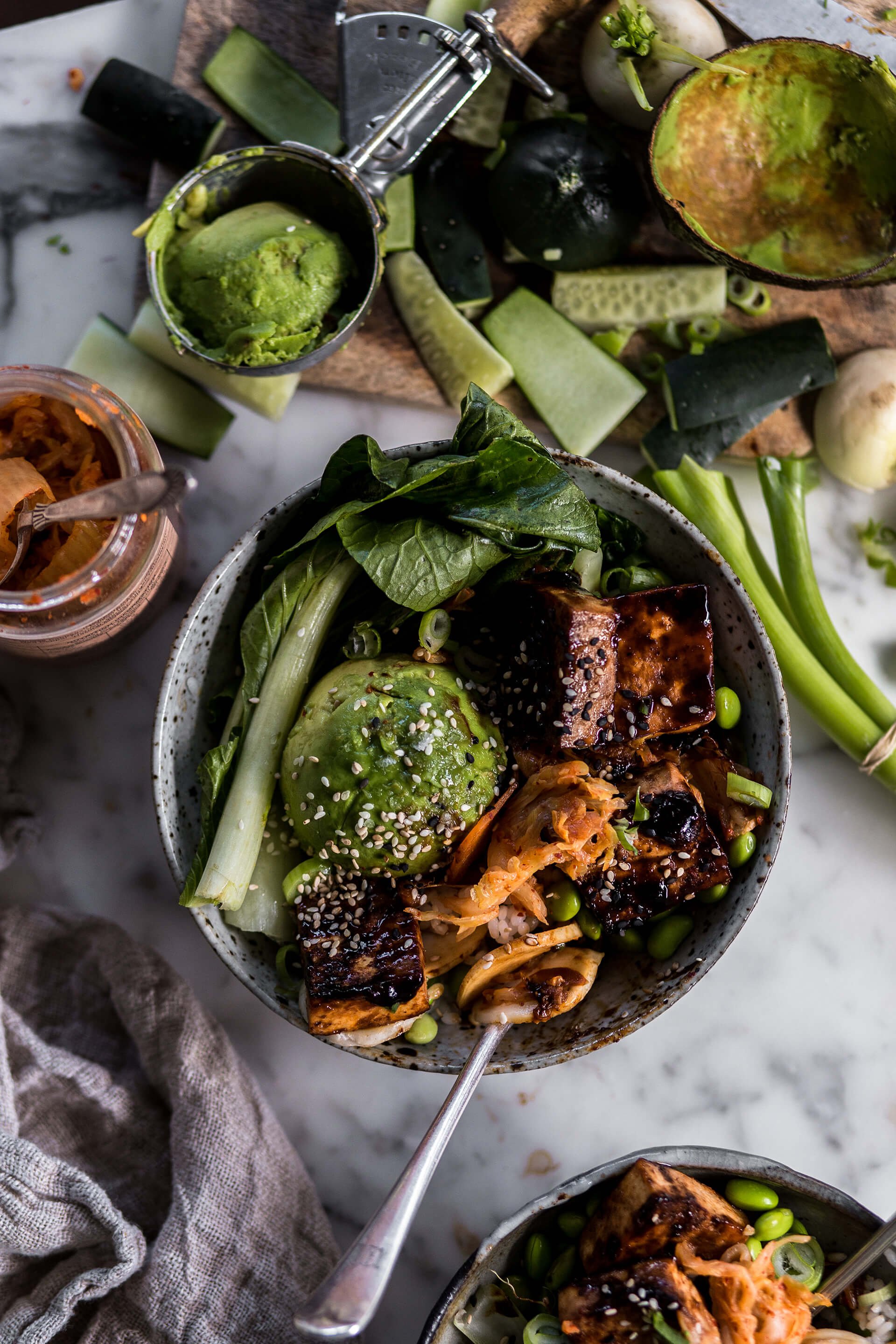Our version of some kind of Ha Poke bowl
This is a poke bowl inspired by Ha Poke, Ponsonby, not Hawaii, delivered by Uber Eats on rare nights where I could not, and my partner could not be bothered throwing a meal of any sorts together. This is our version for when there is a bag of edamame in the freezer. Originating in Hawaii, a poke bowl is like a cross between sashimi and a healthy salad, including a raw fish protein and anything from rice, noodles, avocado and kale. Custom sushi, if you will. Except there is no fish here, opting instead for plants, from the land, from the sea. And although one food writer once referred to tofu as ‘blubber’, once you know how to properly cook tofu it’s not such a big departure. The flavours are just as bold, the food makes for the most delicious eating and it’s satisfying.
This is somewhat of a guide on how to build the perfect plant powered poke bowl. Start with a sushi rice base allowing the greens to be driven by the season. And so this is an always-in-season bowl, with equal pantry, fridge and freezer ingredient requirements. We’ve made ours with organic tofu, cubed and mixed with sesame oil and tamari, a little garlic and lot of fresh ginger. The rice is prepared with dried seaweed, a few vigorous shakes of brown rice vinegar, topped with bok choy, crispy pan-fried tofu, kimchi, edamame, avocado and a lot of spring onion and sesame seeds. You could do this, or some variation on this and add whichever else you’re feeling. These poke bowls make for a balanced nourishing lunch, dinner, or anywhere in-between, it makes about four meals worth. Batch cook it and live the high life all week long. It's perfect for meal preparation, a strategy I use often myself for throwing together quick, nourishing meals in no time. It is something that I really believe in. I think people want to eat real food, they are aware of the power of food. I feel that we are grasping for health, a higher state of wellness, and education.
Yet, culturally we have perpetuated this idea that we are too busy to prepare food, time is viewed as a negative status symbol, and that sort of language does nothing more than to reduce food preparation to a chore. Exploring the complex relationship between the marketing of fast and convenience food, competing marketing strategies are suggestive we require a fast food culture because of time poverty. And that is the intention. We are sold pre-prepared, highly processed packaged foods, convenience ready meals that are implemented to support marketing objectives or economic efficiencies at the expense of everything else. Microwavable rice for example. And if we were, to be honest with ourselves, we could do better than to compile meals from composite packaged parts. It is wasteful. And that narrative is embedded in every conversation about feeding people, conserving natural resources and ensuring a healthy nation, for keeping our food system within ecological limits.








